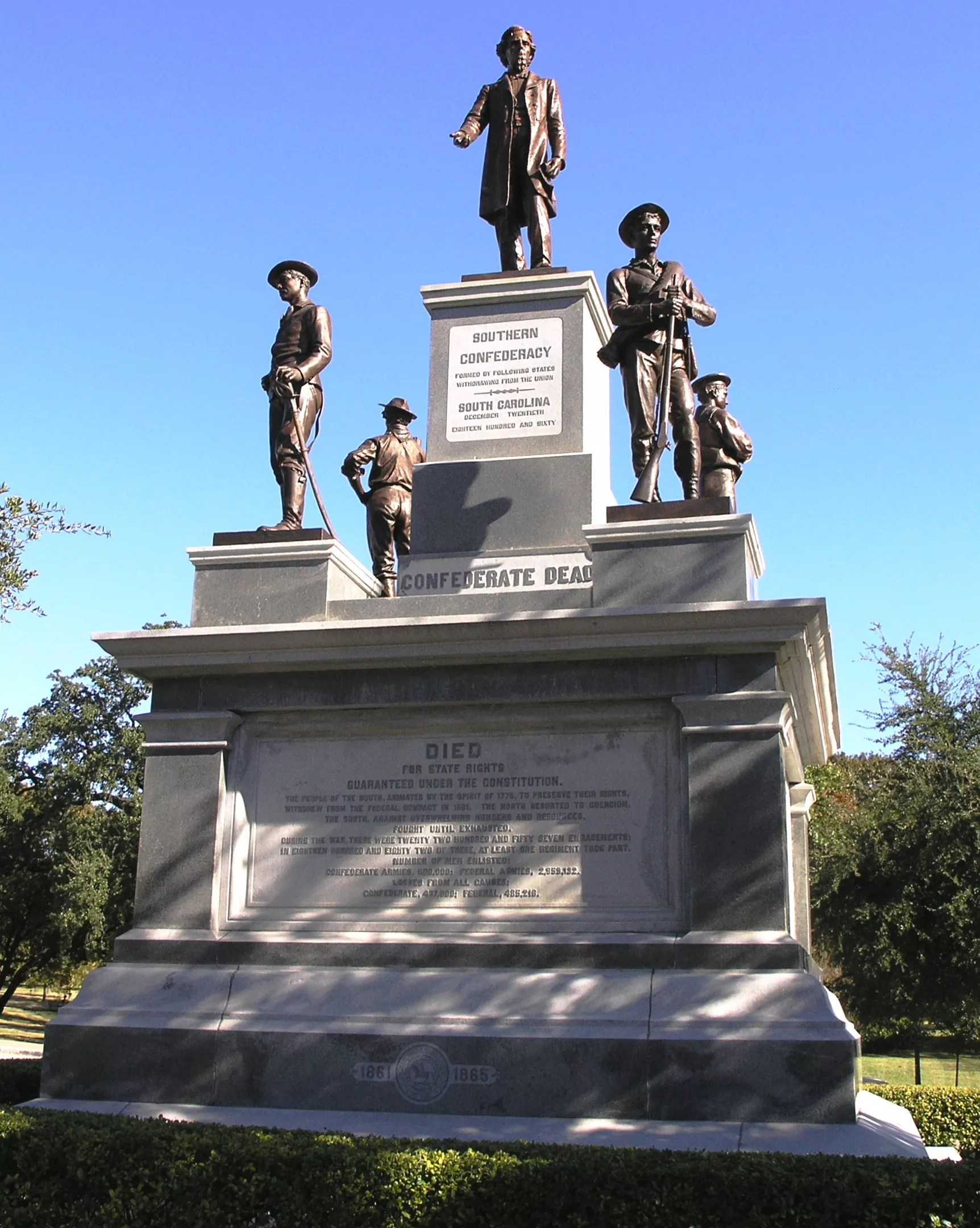
Daniel Mayer / Wikimedia Commons

Audio By Carbonatix
The Texas Capitol may lose vestiges of the Confederacy thanks to a bill that’s working its way through the Legislature.
A bill filed by Dallas state Rep. Rafael Anchía was referred to the House’s Culture, Recreation and Tourism Committee earlier this month. Besides removing Confederate monuments and memorials from Capitol grounds, it would rename a state government building to honor two abolitionists.
In a statement, Anchía called Confederate monuments “divisive” and said the symbols of racism and slavery work to perpetuate white supremacy, according to CBS-DFW. The memorials “dishonor and insult” Capitol representatives, staff and visitors who are descendants of slaves, he said.
“The Texas Capitol is a symbol of solidarity, as lawmakers from various backgrounds and perspectives come together to create change for our communities,” Anchía said. “The presence of Confederate memorials on the Capitol grounds undermine the unifying work that lawmakers strive to undertake.”
Following last summer’s Black Lives Matter protests, Anchía and DeSoto state Rep. Carl Sherman joined six other Democratic state lawmakers also demanding the monuments’ removal.
If passed, Anchía’s bill would remove the following:
- A portrait of Albert Sidney Johnston in the Senate chamber. Born in Kentucky, Johnston was a Confederate Army general who died in the Battle of Shiloh in 1862 along with 23,000 Americans, according to History.com.
- Cannons on the Capitol’s south grounds and near the building’s south entrance. The field artillery was used by the Confederates during the Civil War, according to KXAN.
- A Confederate soldiers’ monument on the Capitol’s south grounds. According to the Texas Observer, this statue is one of the first things visitors view when they enter the Capitol’s southern gates. It features four bronze Confederate soldiers and a bronze statue of Confederate President Jefferson Davis.
- A portrait of Richard William “Dick” Dowling in the House chamber. The Irish-born Dowling joined the Confederacy as a first lieutenant and helped to lead an attack against U.S. gunboats, according to the Texas State Historical Association. Later, he became a recruiting officer for the Confederacy.
- Hood’s Texas Brigade monument on the Capitol’s east grounds. According to the website Texas Historical Markers, Hood’s Brigade was a famous Confederate army unit of between 3,500 and 4,400 troops. The monument has a 44-foot column, atop which a Confederate soldier stands. The statue’s base reads: “Hood’s Texas Brigade shall retain its original formation as long as there is a man left to wave its flag.”
- A portrait of Jefferson Davis in the Senate chamber. The first and only president of the Confederate States of America, Davis was imprisoned and charged with treason weeks after the Confederacy’s defeat. He advocated for the “unrestricted expansion of slavery,” according to History.com.
- Terry’s Texas Rangers Monument on the Capitol’s south grounds. Formally known as the Eighth Texas Cavalry, Terry’s Texas Rangers comprised Confederate Army volunteers. According to the Texas State Historical Association, each cavalry member carried a shotgun or carbine, a Bowie knife and a Colt revolver. Even after the South’s collapse, Terry’s Rangers never officially surrendered.
Anchía’s bill would also rebrand the John H. Reagan Building, which was named after the Confederacy’s postmaster general. After the war, Reagan encouraged Texans to renounce slavery and secession; otherwise, he feared that the state would be subjected to the “‘twin disasters‘ of military despotism and universal Black suffrage,” according to the Texas State Historical Association.
Instead, Anchía proposed that the structure be called the Jackson-Webber Building. NPR reported that Nathaniel Jackson and John Ferdinand Webber were abolitionists who facilitated an underground Texas railroad to help runaway slaves escape to Mexico.
In July, Anchía told the Observer that Confederate monuments are racist symbols undeserving of a “place of celebration at the Capitol.”
“If you support the continued celebration of Confederate leaders and the Confederacy, then it really says something about how you view America and how you view Black lives,” he said at the time.